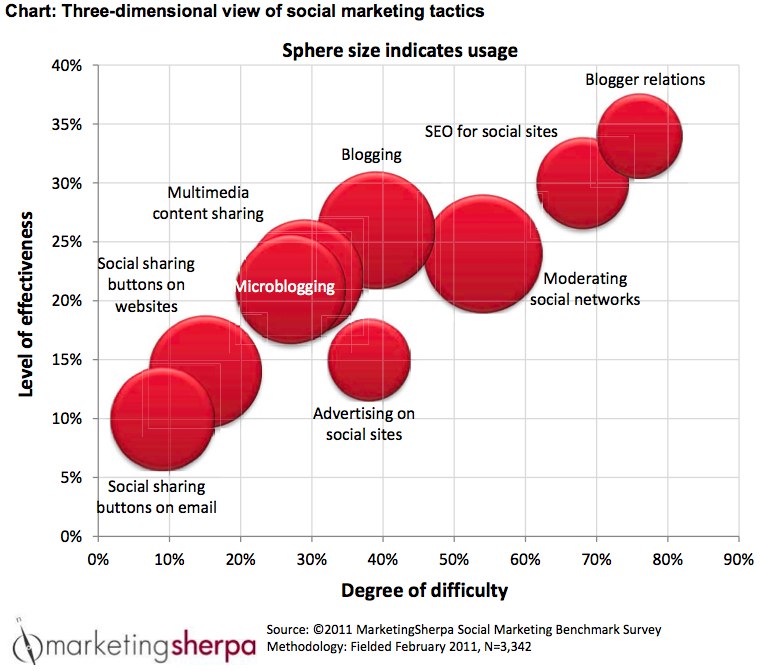Sometimes the path of least resistance unwinds into a far more complicated and arduous journey than we anticipated. In times of change, taking the path less traveled is easier and far more rewarding. Such is true for social media.
I read a review about Engage once that read, “Brian Solis takes the fun out of social media.” The author’s point was that the book took an academic approach when the industry could benefit from something that focused on best practices, case studies, and actionable takeaways.
Shortly thereafter, I participated in a day-long event at a leading global consumer brand. Following my presentation, the person, a representative from a leading social network, took the stage and started her presentation by slighting the general theme of my discussion. She simply said, “Don’t over think social media. It’s supposed to be fun!”
Between the review, others like it and that on stage remark, I was starting to think that maybe I was beating the wrong drum. While I appreciate their perspective and their ideas, there are those of us who must march to the beat of our own drummer. This is why my work focuses on how to bridge the gap between customers and businesses, nothing less, nothing more. I focus on accountability, change, innovation and co-creation. It is not easy nor is it supposed to be when your mission is value, starting with the end in mind and working backwards from there.
The truth is that the customer gap existed prior to social media and successfully closing it takes more than basic conversational or content-driven strategies in Twitter, Facebook and other social network. The path to engagement is strenuous, uncharted, and anything but easy. Everything begins with understanding the magnitude of the gap and what it is that people want, are missing or could benefit from in order to bring both ends toward the middle.
No matter how hard we try, we just can’t build a customer-centric organization if we do not know what it is people value. Social media are your keys to unlocking the 5I’s of engagement to develop more informed and meaningful programs:
1. Intelligence – Learn about needs, wants, values, challenges
2. Insight – Find the “aha’s” to identify gaps
3. Ideation – Inspire new ideas for engagement, communication, new products/services, change
4. Interaction – Engage…don’t just publish, bring your mission to life
5. Influence – Influence behavior and in the process, become an influencer
Social media is as effective as its design. The ability to deliver against brand lift, ROI, or an established set of business and operational metrics and KPIs is all in the design. I believe you can not measure what it is you do not, or do not know, to value. As part of a recent study sponsored by Vocus, MarketingSherpa discovered that a majority of social media programs focused on programs that were deemed “fast and easy.” Sound familiar? Indeed, those programs that focus on social media programs that are easy are less effective than those that require a deeper investment of time, understanding and resources.

MarketingSherpa combined three questions about social marketing tactics: The effectiveness to achieve objectives, the degree of difficulty to implement each tactic, and the percentage of organizations using them. Their findings across the board is that “fast and easy” trumps effectiveness.
The tactics with the lowest degree of difficulty and corresponding level of effectiveness include…
– Social sharing buttons in email
– Social sharing buttons on web sites
– Tweeting
– Multimedia creation
– Social advertising
The balance shifts however toward potency as the degree of difficulty escalates. Here we see the following programs carry greater reward for consumers and businesses alike, but as such, you get what you pay for.
– Blogging
– Engagement in social networks
– SMO (Social Media Optimization)
– Blogger and influencer relations
Social media doesn’t have to be void of “fun.” It must offer value and usefulness to be successful.
In the end, the reality is that you get out of social media what you invest in it. But at the same time, experimenting with social media is not anything to discredit. The difference between today’s media and the the networks of yore is nothing less than the democratization of information, from creation to consumption to sharing and the equalization of influence. The marketing landscape has been reset and thus requires a shift from a casual approach to genuine leadership.
1. Start by understanding who you’re trying to reach and what it is they value
2. Design programs that meet the needs of each segment
3. Dissect the keywords and clickpaths of your desirable segments and develop a thoughtful SMO program
4. SMO is only as effective as the content and destinations its meant to enhance. Develop content and click paths that matter and deliver value on both sides of the transaction.
5. Identify the individuals and organizations that influence your markets. Learn what it is they value and develop engagement programs that offer tangible value (what’s in it for them and their audiences).
6. #Engage
Originally published on BrianSolis.com









 WebProNews is an iEntry Publication
WebProNews is an iEntry Publication